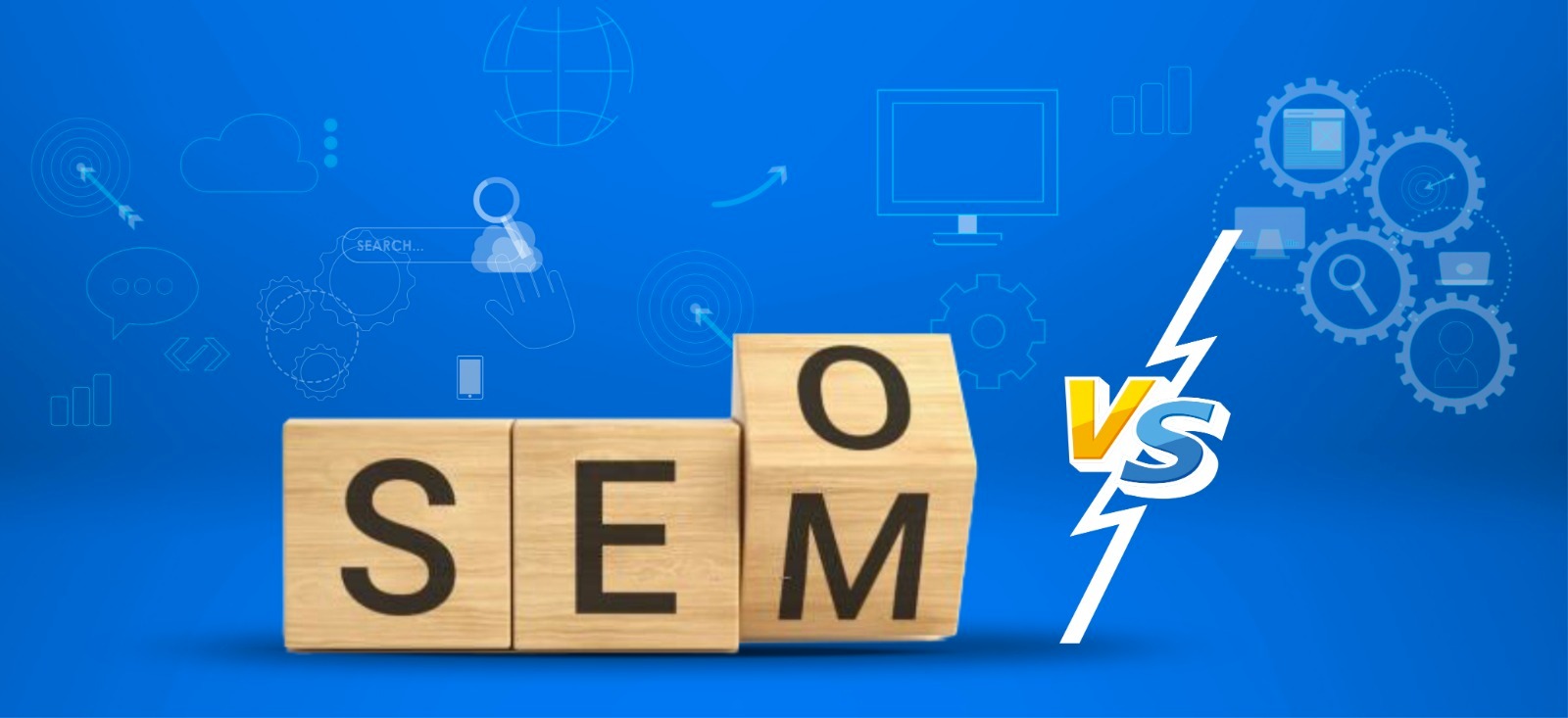Every business owner has a goal of their business being noticed. They want their website to be seen on Google or Wikipedia or whatever site their potential customers use in searching for services they can provide.
Search Engine Optimization (SEO) and Search Engine Marketing (SEM) are two processes to help achieve this. They help improve a website’s visibility and ranking amongst many competitors on Search Engine Results Pages (SERPs).
So, what really is SEO and SEM, and how are they different?
Search Engine Optimization
SEO is the process of optimizing a website to rank higher in organic search engine results. Emphasis on organic; meaning it’s not paid for. It involves improving a website’s content, load time (the amount of time it takes for a website to show up on a screen), and building quality backlinks. Backlinks are links from one website to another, they help increase the trust or authenticity of a website.
Generally, SEO aims to increase the quantity and quality of organic traffic to your website. It’s what brands can call a case of ‘the patient dog eats the fattest bone’. Though it takes time, the results last long.

Search Engine Marketing
SEM, however, is much wider than SEO. It involves a series of paid adverts to help drive traffic to a website by increasing its visibility on search engine results pages. Simply put, SEM involves businesses designing ads about their services and paying search engines to push these ads to a targeted audience or potential customers. It involves activities like:
- Pay-per-click (PPC) advertising: Here, a brand bids on specific keywords or phrases that they want their ads to appear for, and the ads are displayed on SERPs or other websites that are linked to that search engine. Each time a user clicks on the ad, the advertiser pays a fee, hence the term “pay-per-click.” The goal is to drive targeted traffic to a website and convert those visitors into customers.
- Display advertising: Like the name, ‘display’ ads are banner ads, pop-ups, and video ads, placed on websites, social media platforms, or other online properties for the purpose of making people aware of a brand. Here, the brand doesn’t necessarily pay for clicks, but for the ad space.
- Remarketing campaigns: These kinds of ads target users who have already interacted with or visited a website or brand to bring them back and encourage them to complete a desired action. A popular example is Jumia reminding a user to complete a proceed to add an item they searched for to the cart.
Key Differences Between SEO and SEM
- Cost: SEO is organic; meaning it uses processes that do not involve money to drive traffic to a website, SEM on the other hand focuses on paid traffic. For brands, SEO is cost-effective, while SEM is cost intensive.
- Time: SEO is a long-term strategy. Most times, it takes a long time for the results to show, while SEM is quicker so far you have the funds for it.
- Process: Although both SEO and SEM are not one-offs, while SEO requires ongoing efforts to keep a website visible, SEM requires ongoing investments.
- Competition: For fast-growing and highly competitive brands, SEO might not be advisable because it might not give the brand enough opportunity to compete in the industry since it won’t be visible enough to even get attention. SEM, on the other hand, grants a brand this chance.
- Flexibility: SEM offers a brand a range of targeting options to reach its audience. Brands can leverage different sites and social media platforms provided they can pay for ads. SEO on the other hand is quite limited.
SEO or SEM? Which is Right for a Business?
Both SEM and SEO help to build credibility and authority for brands and help drive high-quality traffic to websites. Some might even say that SEM is an umbrella under which SEO falls.
Whichever way, the choice between SEO and SEM for any business, will depend on the size of the business, the business goals, the budget, and the timeline.
For a business seeking immediate results and having the budget to support it, SEM may be the right approach. On the other hand, for businesses looking to build long-term credibility and authority and have the patience to wait for results, SEO may be the better choice.
In conclusion, a combination of both SEO and SEM can be what can be termed ‘the perfect mix’. It would be effective for driving targeted traffic to a website and maximizing the impact of a business’s digital marketing efforts.